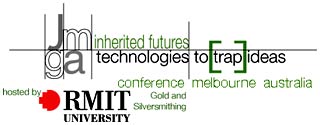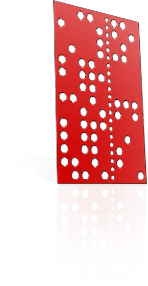RMIT University Workshop
Jewellery creation takes artistic design through phases of manufacturing. To possess all the skills and dexterities for the complete process is rare. Computer aided drafting took architecture into the 20th century, allowing capture, storage, modification and presentation. But the final product still needed to be executed by others - often hundreds of others.

For jewel artistry, the tools of 3D-capture, 3D-CAD and 3D manufacture provide 21st century jewel artisans the ability to conceive, borrow, combine, record, present and modify their designs and finally to execute their unique designs, even if their fine motor skills and their available time are limiting factors. These 3D elements are now affordable and understandable to creators.
Mark Bingham shows how to capture the surfaces of existing objects (in or out of context) for inclusion in jewellery. He shows 3-axis 3D scanning and by the addition of rotary capability 4-axis 3D scanning, even of objects with undercuts, hidden areas, through-holes and shadows. Scaling up or down, editing and combining, he shows inexpensive benchtop machinery producing rings, animals, sculptures that draw on designs he has 3D-captured, 3D-CAD created or 3D-library stored.
Drawing on existing "rapid prototyping" equipment, new machinery and techniques, even satellite photo analysis methods, Mark links all the phases through standard software, empowering jewel artisans affordably to blend centuries-old knowledge with 21st century processes. He presents by video-movie, pictorial, tactile example object, real-time scan process, real-time milling process and hands-on example, with multiple question-and-answer sessions each day.
